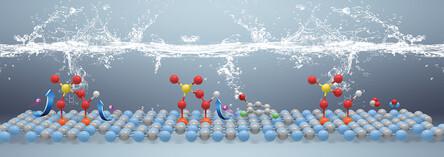Our official English website, www.x-mol.net, welcomes your
feedback! (Note: you will need to create a separate account there.)
了解类芬顿反应中单原子活性位点的距离效应,以实现有效的水体修复
Advanced Science ( IF 14.3 ) Pub Date : 2024-01-15 , DOI: 10.1002/advs.202307151
Shuaiqi Zhang 1 , Zhicong Lu 1 , Chun Hu 1 , Fan Li 1
Affiliation

|
新兴的单原子催化剂(SAC)在通过类芬顿反应进行水修复方面前景广阔。尽管通过增加单原子活性位点的密度显着增强了催化活性,但性能的提高并不仅仅归因于活性位点数量的增加。由于原子密度增加而引起的催化行为的变化特别难以捉摸,值得深入研究。在此,通过控制Fe负载量构建了相邻单原子Fe位点之间具有不同距离( d位点)的单原子Fe催化剂(Fe SA -CN)。随着d位值的降低,通过过一硫酸盐 (PMS) 活化的电子转移机制实现了 Fe SA -CN 的催化活性显着增强。 d位点值的降低促进电子通讯并进一步改变电子结构,有利于 PMS 激活。此外,两个相邻的单原子Fe位点共同吸附PMS并实现PMS分解产物的单位点解吸,保持持续的PMS激活和污染物去除。此外,Fe SA -CN/PMS系统对各种水生系统表现出优异的抗干扰性能,并且在连续流实验中具有良好的耐用性,表明其在水处理应用中具有巨大的潜力。本研究通过设计密集的 SAC,深入了解单原子活性位点对水体修复的距离影响。

"点击查看英文标题和摘要"

































 京公网安备 11010802027423号
京公网安备 11010802027423号